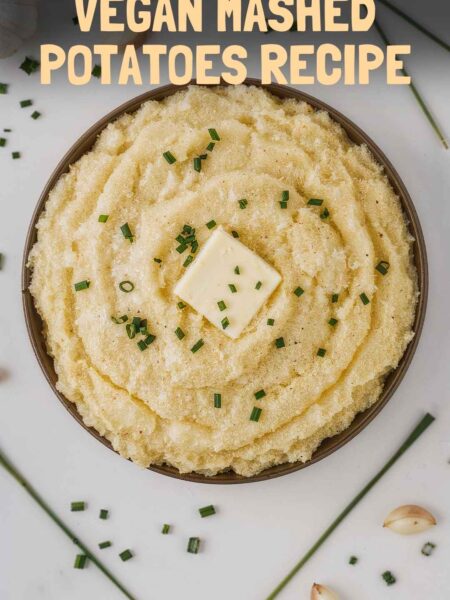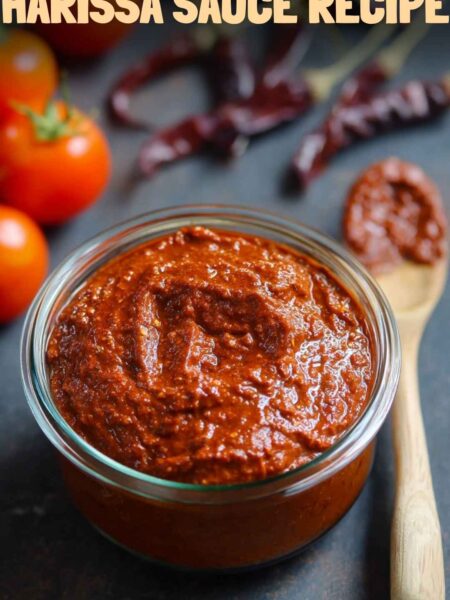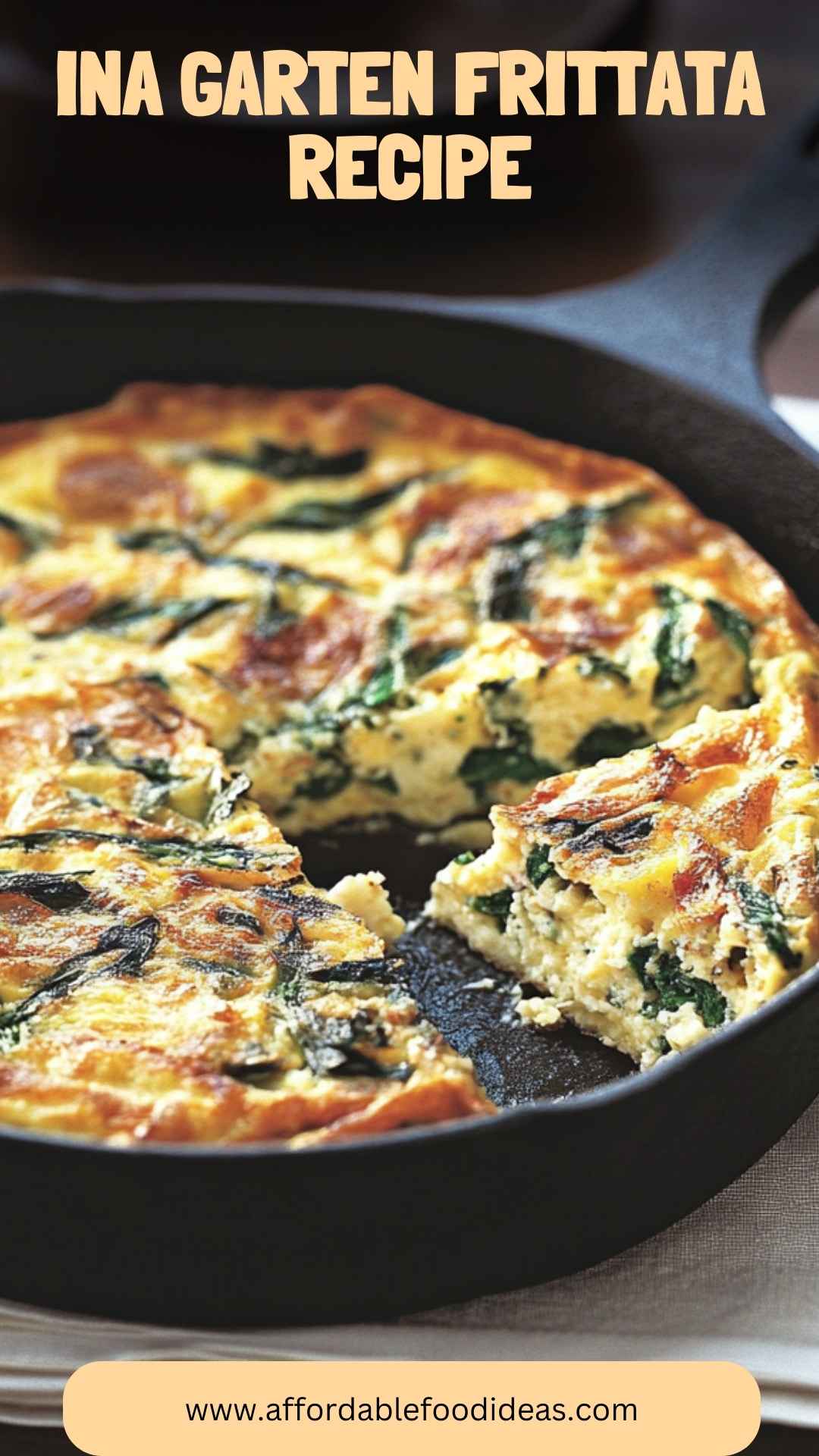Almond meal is an incredibly versatile ingredient. It adds a delightful nutty flavor and texture to a variety of dishes. Imagine pairing it with smooth, creamy yogurt for breakfast or mixing it into oatmeal for a hearty start to your day.
It works beautifully in baking — think muffins, pancakes, or even chocolate chip cookies. You can also sprinkle it over salads for crunch or use it as a coating for chicken or fish. If you’re feeling adventurous, try incorporating it into a thick smoothie or a guilt-free energy bar. The possibilities are practically endless!
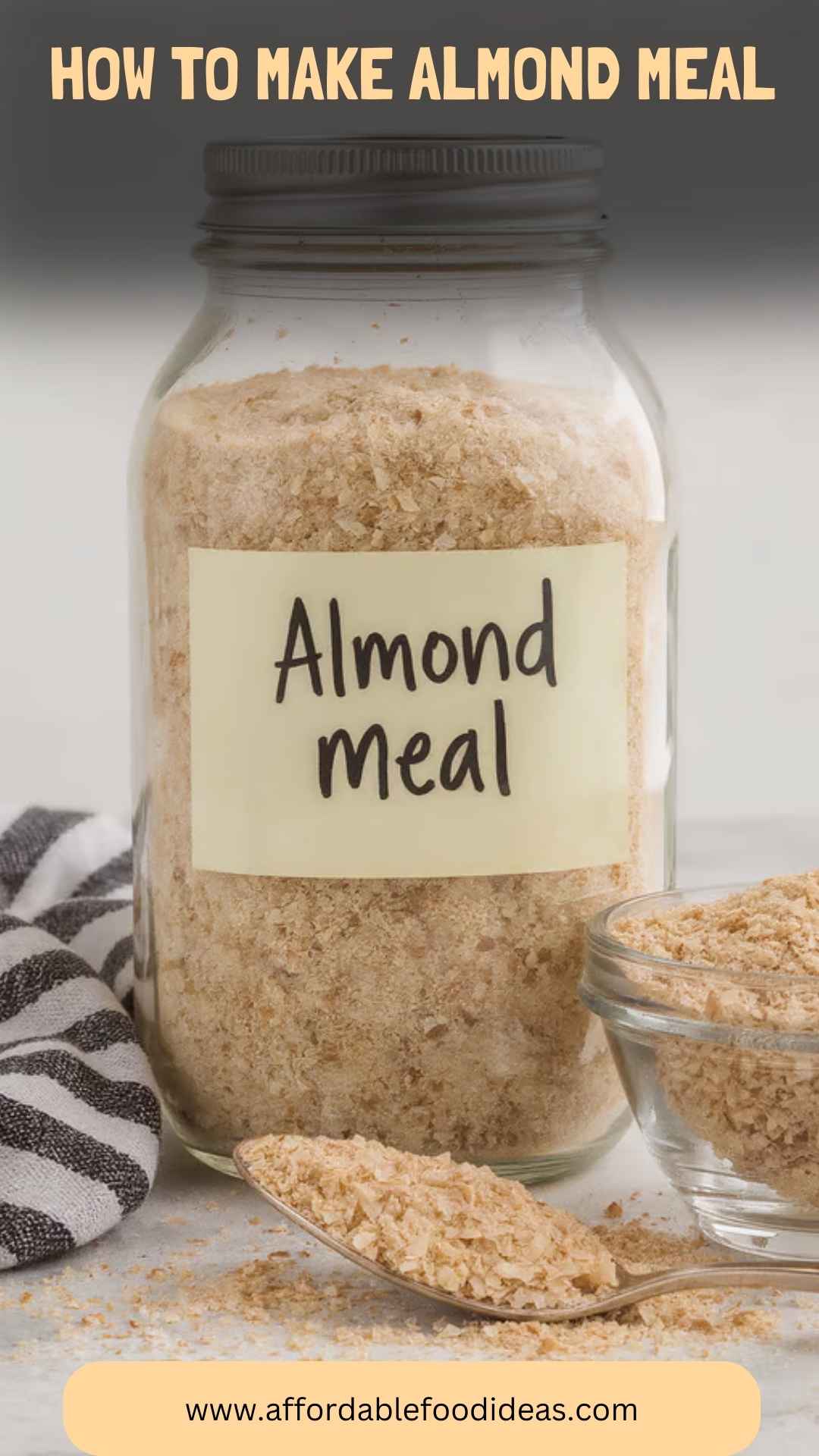
What is Almond Meal?
Almond meal is simply ground almonds. It’s created by finely chopping whole almonds, which can include the skins for added texture and flavor. Unlike almond flour, which is made from blanched (skinless) almonds and is often ground to a finer consistency, almond meal retains its skins and is a bit coarser. This difference impacts its color, taste, and texture in your recipes.
What is the Flavor Profile of Almond Meal?
The flavor of almond meal is rich and slightly sweet, with a distinct nuttiness that enhances both sweet and savory dishes. When you sprinkle it over salads, or incorporate it into your favorite baked goods, it adds depth and a pleasant crunch.
The moisture within almond meal can give baked items a tender crumb, making them delightful to eat. If you’ve ever enjoyed a good piece of almond cake or almond-flavored pastry, you’ll understand how this meal can elevate your cooking.
What Makes This Recipe Different From Other Almond Meal Recipes?
With so many resources available, you might wonder what makes this approach stand out. Rather than buying pricey packaged almond meal, making your own allows you to control the grind, ensuring you achieve your desired texture.
This method is not only economical, but it offers a fresher product. Plus, the satisfaction of creating something from scratch adds joy to the cooking process. Armed with just raw almonds and a food processor, you’re equipped to craft the perfect almond meal every time.
Ingredients You’ll Need
To whip up your homemade almond meal, you’ll need just two items:
- 14 ounces of whole raw almonds (skin-on for extra crunch)
- ½ teaspoon ground cinnamon (for a touch of warmth)
Optional:
- 1 teaspoon pure vanilla extract (to enhance flavor)

Step-by-Step Directions
Now, let’s dive into making your almond meal. Follow these steps:
Step 1: Gather Your Ingredients and Equipment
To ensure a smooth process, gather all your ingredients and equipment before you start. You’ll need a food processor or a high-speed blender to grind the almonds effectively. A spatula will help scrape down the sides, ensuring even grinding.
Step 2: Measure the Almonds
Weigh out 14 ounces of raw almonds. If you don’t have a kitchen scale, this is roughly 2 cups. Consider the skins, as including them adds texture and nutrients to your meal.
Step 3: Add Almonds to the Food Processor
Place the measured almonds in your food processor. Make sure not to overcrowd the bowl. If you have a smaller processor, you might want to grind the almonds in batches.
Step 4: Start Grinding
Pulse the almonds at first. This helps break them down without turning them into almond butter. You want a fine texture, but not a creamy one. This step typically takes about 30 seconds to a minute.
Step 5: Scrape and Continue Grinding
Stop the processor and scrape down the sides with the spatula. This ensures all almonds get ground evenly. Pulse again for another 30 seconds. Keep an eye on the texture — if you see a clump forming, that’s a sign it’s getting close.
Step 6: Add Flavorings (Optional)
If you’re using cinnamon and vanilla extract, now’s the time to add them to the processor. Blend them for an additional 10 seconds. This step is entirely optional, but it enhances the flavor profile if you are using the almond meal for desserts or sweet recipes.
Step 7: Check the Consistency
Once you stop the processor, check the consistency. You’re aiming for a fine meal, similar to flour but with a coarser texture. If it’s too coarse, pulse it a little longer, but watch carefully to prevent turning it into butter.
Step 8: Store Your Almond Meal
Once you’ve achieved your desired consistency, carefully transfer the almond meal to an airtight container.
Tips on Making Almond Meal
Here are some quick tips to keep in mind:
Use Fresh Almonds: Fresh almonds yield better flavor. Check the expiration date before purchasing.
Don’t Over-process: Keep an eye on the texture to avoid creating almond butter. Check frequently during grinding.
Store Properly: Keep your almond meal in an airtight container in a cool, dry place to maintain freshness.
Experiment with Flavors: Add spices or extracts according to your recipe needs. Cinnamon, nutmeg, or even cocoa powder can give unique profiles.
Batch it Up: Make a larger quantity and store it for later use. It keeps well in the freezer.
Nutrition Information
Almond meal is rich in nutrients, making it a great addition to a balanced diet. A typical serving (1/4 cup) contains approximately:
- Calories: 150
- Fat: 13g (mostly healthy fats)
- Protein: 6g
- Carbohydrates: 6g
- Fiber: 3g
- Calcium: 8% of Daily Value (DV)
- Iron: 6% of DV
How Can I Store Almond Meal?
To keep your homemade almond meal fresh, follow these storage tips:
In the Pantry: Store it in an airtight container away from light and moisture for up to one month.
In the Freezer: For longer storage, keep it in the freezer. Place it in a zip-lock bag or airtight container and it can last for six months or more.
Substitutes for Almond Meal
If you find yourself short on almond meal, here are a few options:
Cashew Meal: Ground cashews can provide a similar texture and nuttiness, perfect for sweet dishes.
Sunflower Seed Meal: For a nut-free alternative, try ground sunflower seeds. They give a beautifully earthy flavor.
Oat Flour: When you need a gluten-free option, finely ground oats can work well, especially for baking.
Coconut Flour: This adds a unique sweetness and is often used in gluten-free recipes, but remember to adjust other liquids in your recipe, as it absorbs moisture.

Conclusion
Creating your almond meal is a simple yet rewarding kitchen endeavor. It’s economical, fresh, and allows for flexibility in your cooking. The nutty flavor enhances every dish it touches. Whether you’re baking a scrumptious cake or adding crunch to your salad, homemade almond meal is a must-have staple. So roll up those sleeves, grab those almonds, and embark on your tasty journey! Happy cooking!
You’ll also like the following recipes!
How to Make Almond Meal – Affordable Food Ideas
I remember the first time I decided to make my own almond meal. I was sifting through a recipe book, impressed by how many dishes utilized this fine, nutty powder. I thought, why not try making some? After a quick trip to the store and a little experimentation in my kitchen, I was blown away by how simple it was.
This small act turned into a staple in my cooking. Grab your food processor, and let's embark on this delightful journey together. By the end of this post, you’ll be a pro at making your own almond meal!
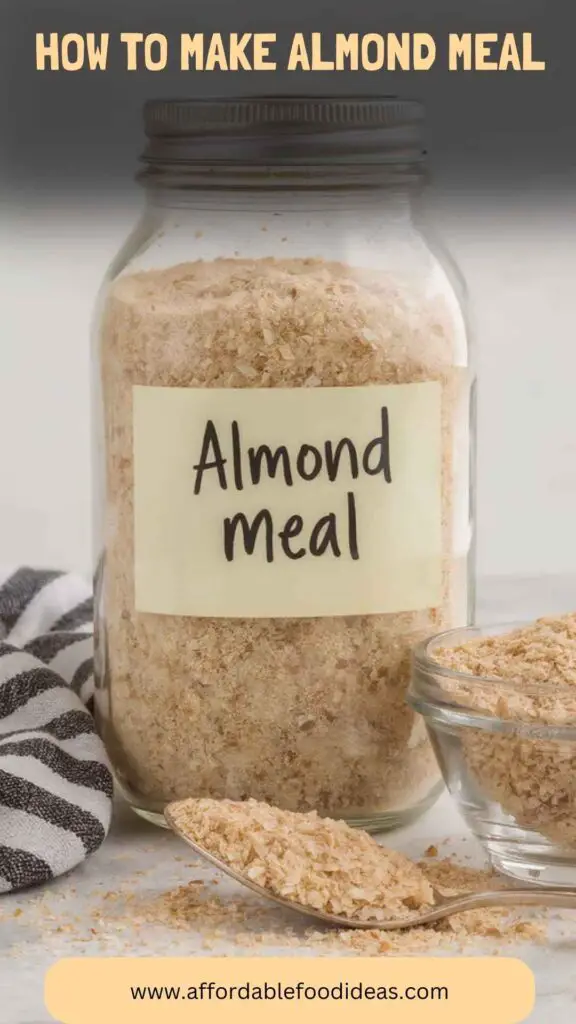
Ingredients
Optional:
Instructions
Step 1: Gather Your Ingredients and Equipment
-
To ensure a smooth process, gather all your ingredients and equipment before you start. You’ll need a food processor or a high-speed blender to grind the almonds effectively. A spatula will help scrape down the sides, ensuring even grinding.
Step 2: Measure the Almonds
-
Weigh out 14 ounces of raw almonds. If you don’t have a kitchen scale, this is roughly 2 cups. Consider the skins, as including them adds texture and nutrients to your meal.
Step 3: Add Almonds to the Food Processor
-
Place the measured almonds in your food processor. Make sure not to overcrowd the bowl. If you have a smaller processor, you might want to grind the almonds in batches.
Step 4: Start Grinding
-
Pulse the almonds at first. This helps break them down without turning them into almond butter. You want a fine texture, but not a creamy one. This step typically takes about 30 seconds to a minute.
Step 5: Scrape and Continue Grinding
-
Stop the processor and scrape down the sides with the spatula. This ensures all almonds get ground evenly. Pulse again for another 30 seconds. Keep an eye on the texture — if you see a clump forming, that’s a sign it’s getting close.
Step 6: Add Flavorings (Optional)
-
If you’re using cinnamon and vanilla extract, now’s the time to add them to the processor. Blend them for an additional 10 seconds. This step is entirely optional, but it enhances the flavor profile if you are using the almond meal for desserts or sweet recipes.
Step 7: Check the Consistency
-
Once you stop the processor, check the consistency. You’re aiming for a fine meal, similar to flour but with a coarser texture. If it’s too coarse, pulse it a little longer, but watch carefully to prevent turning it into butter.
Step 8: Store Your Almond Meal
-
Once you’ve achieved your desired consistency, carefully transfer the almond meal to an airtight container.
Nutrition Facts
Servings 1
- Amount Per Serving
- Calories 150kcal
- % Daily Value *
- Total Fat 13g20%
- Total Carbohydrate 6g2%
- Dietary Fiber 3g12%
- Protein 6g12%
* Percent Daily Values are based on a 2,000 calorie diet. Your daily value may be higher or lower depending on your calorie needs.
Note
- Use Fresh Almonds: Fresh almonds yield better flavor. Check the expiration date before purchasing.
- Don’t Over-process: Keep an eye on the texture to avoid creating almond butter. Check frequently during grinding.
- Store Properly: Keep your almond meal in an airtight container in a cool, dry place to maintain freshness.
- Experiment with Flavors: Add spices or extracts according to your recipe needs. Cinnamon, nutmeg, or even cocoa powder can give unique profiles.
- Batch it Up: Make a larger quantity and store it for later use. It keeps well in the freezer.


